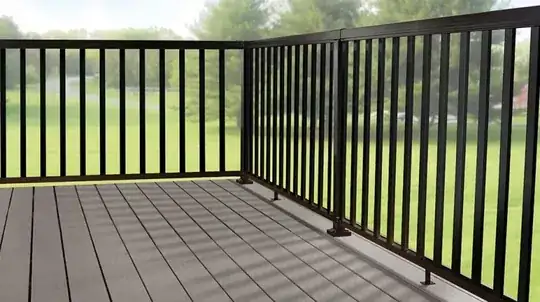I am planning some container plantings that will go on the north side of a deck railing very much like this one (in the Northern Hemisphere):
Without the railing, this location would receive unobstructed sun from essentially sunrise to sunset. I am trying to understand how the presence of the railing changes the equation.
I have done some Python simulations to calculate the size/shape of the shadows cast by the railing and pickets (and how those shadows change over the course of the day/year). Those simulations indicate that there is a band of points right next to the railing that receive 4-6 hours of direct sunlight per day. That band is pretty narrow in the summer, but wider in the winter.
My question is whether this is the right way to "count" sun from the plants' perspective. In particular, any point next to the railing gets a cumulative 4-6 hours of sun, but a plant next to the railing is partially in shadow and partially in sun at all times because of the shadows cast by the pickets. Would this change how the plant "perceives" how much light it is receiving (relative being fully in sun for 4-6 hours and in shadow the rest of the day)?